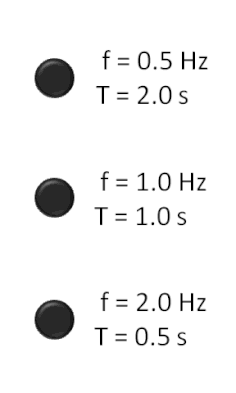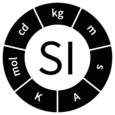Hertz: Difference between revisions
Link. |
Rescuing 2 sources and tagging 0 as dead. #IABot (v1.6) |
||
| Line 104: | Line 104: | ||
* [http://archive.nrc-cnrc.gc.ca/eng/projects/inms/fountain-clock.html National Research Council of Canada: ''Cesium fountain clock''] |
* [http://archive.nrc-cnrc.gc.ca/eng/projects/inms/fountain-clock.html National Research Council of Canada: ''Cesium fountain clock''] |
||
* [http://www.npl.co.uk/server.php?show=ConWebDoc.1086 National Physical Laboratory: ''Trapped ion optical frequency standards''] |
* [http://www.npl.co.uk/server.php?show=ConWebDoc.1086 National Physical Laboratory: ''Trapped ion optical frequency standards''] |
||
* [http://archive.nrc-cnrc.gc.ca/eng/projects/inms/trapped-ion.html National Research Council of Canada: ''Optical frequency standard based on a single trapped ion''] |
* [https://web.archive.org/web/20131223133059/http://archive.nrc-cnrc.gc.ca/eng/projects/inms/trapped-ion.html National Research Council of Canada: ''Optical frequency standard based on a single trapped ion''] |
||
* [http://archive.nrc-cnrc.gc.ca/eng/projects/inms/optical-comb.html National Research Council of Canada: ''Optical frequency comb''] |
* [https://web.archive.org/web/20130627155632/http://archive.nrc-cnrc.gc.ca/eng/projects/inms/optical-comb.html National Research Council of Canada: ''Optical frequency comb''] |
||
* [http://onlinetonegenerator.com Online Tone Generator] |
* [http://onlinetonegenerator.com Online Tone Generator] |
||
Revision as of 05:22, 3 November 2017
| Hertz | |
|---|---|
| Unit system | SI derived unit |
| Unit of | Frequency |
| Symbol | Hz |
| Named after | Heinrich Hertz |
| In SI base units | s−1 |

The hertz (symbol: Hz) is the derived unit of frequency in the International System of Units (SI) and is defined as one cycle per second.[1] It is named for Heinrich Rudolf Hertz, the first person to provide conclusive proof of the existence of electromagnetic waves. Hertz are commonly expressed in multiples: kilohertz (103 Hz, kHz), megahertz (106 Hz, MHz), gigahertz (109 Hz, GHz), and terahertz (1012 Hz, THz).
Some of the unit's most common uses are in the description of sine waves and musical tones, particularly those used in radio- and audio-related applications. It is also used to describe the speeds at which computers and other electronics are driven.
Definition
The hertz is equivalent to cycles per second, i.e., "1/second" or .[2] The International Committee for Weights and Measures defined the second as "the duration of 9 192 631 770 periods of the radiation corresponding to the transition between the two hyperfine levels of the ground state of the caesium 133 atom"[3] and then adds the obvious conclusion: "It follows that the hyperfine splitting in the ground state of the caesium 133 atom is exactly 9 192 631 770 hertz, ν(hfs Cs) = 9 192 631 770 Hz."
In English, "hertz" is also used as the plural form.[4] As an SI unit, Hz can be prefixed; commonly used multiples are kHz (kilohertz, 103 Hz), MHz (megahertz, 106 Hz), GHz (gigahertz, 109 Hz) and THz (terahertz, 1012 Hz). One hertz simply means "one cycle per second" (typically that which is being counted is a complete cycle); 100 Hz means "one hundred cycles per second", and so on. The unit may be applied to any periodic event—for example, a clock might be said to tick at 1 Hz, or a human heart might be said to beat at 1.2 Hz. The occurrence rate of aperiodic or stochastic events is expressed in reciprocal second or inverse second (1/s or s−1) in general or, in the specific case of radioactive decay, in becquerels.[5] Whereas 1 Hz is 1 cycle per second, 1 Bq is 1 aperiodic radionuclide event per second.
Even though angular velocity, angular frequency and the unit hertz all have the dimension 1/s, angular velocity and angular frequency are not expressed in hertz,[6] but rather in an appropriate angular unit such as radians per second. Thus a disc rotating at 60 revolutions per minute (rpm) is said to be rotating at either 2π rad/s or 1 Hz, where the former measures the angular velocity and the latter reflects the number of complete revolutions per second. The conversion between a frequency f measured in hertz and an angular velocity ω measured in radians per second is
- and .
The hertz is named after Heinrich Hertz. As with every SI unit named for a person, its symbol starts with an upper case letter (Hz), but when written in full, it follows the rules for capitalisation of a common noun; i.e., hertz becomes capitalised at the beginning of a sentence and in titles but is otherwise in lower case.
History
The hertz is named after the German physicist Heinrich Hertz (1857–1894), who made important scientific contributions to the study of electromagnetism. The name was established by the International Electrotechnical Commission (IEC) in 1930.[7] It was adopted by the General Conference on Weights and Measures (CGPM) (Conférence générale des poids et mesures) in 1960, replacing the previous name for the unit, cycles per second (cps), along with its related multiples, primarily kilocycles per second (kc/s) and megacycles per second (Mc/s), and occasionally kilomegacycles per second (kMc/s). The term cycles per second was largely replaced by hertz by the 1970s. One hobby magazine, Electronics Illustrated, declared their intention to stick with the traditional kc., Mc., etc. units.[8]
Applications


Vibration
Sound is a traveling longitudinal wave which is an oscillation of pressure. Humans perceive frequency of sound waves as pitch. Each musical note corresponds to a particular frequency which can be measured in hertz. An infant's ear is able to perceive frequencies ranging from 20 Hz to 20,000 Hz; the average adult human can hear sounds between 20 Hz and 16,000 Hz.[9] The range of ultrasound, infrasound and other physical vibrations such as molecular and atomic vibrations extends from a few femtoHz[10] into the terahertz range[11] and beyond.
Electromagnetic radiation
Electromagnetic radiation is often described by its frequency—the number of oscillations of the perpendicular electric and magnetic fields per second—expressed in hertz.
Radio frequency radiation is usually measured in kilohertz (kHz), megahertz (MHz), or gigahertz (GHz). Light is electromagnetic radiation that is even higher in frequency, and has frequencies in the range of tens (infrared) to thousands (ultraviolet) of terahertz. Electromagnetic radiation with frequencies in the low terahertz range (intermediate between those of the highest normally usable radio frequencies and long-wave infrared light) is often called terahertz radiation. Even higher frequencies exist, such as that of gamma rays, which can be measured in exahertz. (For historical reasons, the frequencies of light and higher frequency electromagnetic radiation are more commonly specified in terms of their wavelengths or photon energies: for a more detailed treatment of this and the above frequency ranges, see electromagnetic spectrum.)
Computers
In computers, most central processing units (CPU) are labeled in terms of their clock rate expressed in megahertz or gigahertz (106 or 109 hertz, respectively). This number refers to the frequency of the CPU's master clock signal ("clock rate"). This signal is a square wave, which is an electrical voltage that switches between low and high values at regular intervals. Hertz has become the primary unit of measurement accepted by the general populace to determine the performance of a CPU, but many experts have criticized this approach, which they claim is an easily manipulable benchmark as some processors use multiple clock periods to perform a single operation, while others can perform multiple operations in a single cycle.[12] For home-based personal computers, CPU clock speeds have ranged from approximately 1 MHz in the late 1970s (Atari, Commodore, Apple computers) to up to 6 GHz in IBM POWER microprocessors.
Various computer buses, such as the front-side bus connecting the CPU and northbridge, also operate at various frequencies in the megahertz range.
The "speed" or the more correct term bandwidth of networks, including wireless, such as Wi-Fi, 3G, 4G, LTE, etc. is not affected by the myth described above. In general, higher frequency allows for higher possible bandwidth or bit rates, and lowers the time it takes to download large files. In general, however, higher frequencies do not pass through walls, making lower frequencies an advantage indoors. Most common equipment reports the highest frequency available, but usually also works at lower ones. Bandwidth is often equated with "speed", while latency ("lag") is the perceived problem (and is a measure distinct from bandwidth); higher bandwidth has an influence on latency.
SI multiples
| Submultiples | Multiples | ||||
|---|---|---|---|---|---|
| Value | SI symbol | Name | Value | SI symbol | Name |
| 10−1 Hz | dHz | decihertz | 101 Hz | daHz | decahertz |
| 10−2 Hz | cHz | centihertz | 102 Hz | hHz | hectohertz |
| 10−3 Hz | mHz | millihertz | 103 Hz | kHz | kilohertz |
| 10−6 Hz | μHz | microhertz | 106 Hz | MHz | megahertz |
| 10−9 Hz | nHz | nanohertz | 109 Hz | GHz | gigahertz |
| 10−12 Hz | pHz | picohertz | 1012 Hz | THz | terahertz |
| 10−15 Hz | fHz | femtohertz | 1015 Hz | PHz | petahertz |
| 10−18 Hz | aHz | attohertz | 1018 Hz | EHz | exahertz |
| 10−21 Hz | zHz | zeptohertz | 1021 Hz | ZHz | zettahertz |
| 10−24 Hz | yHz | yoctohertz | 1024 Hz | YHz | yottahertz |
| 10−27 Hz | rHz | rontohertz | 1027 Hz | RHz | ronnahertz |
| 10−30 Hz | qHz | quectohertz | 1030 Hz | QHz | quettahertz |
| Common prefixed units are in bold face. | |||||
Higher frequencies than the International System of Units provides prefixes for are believed to occur naturally in the frequencies of the quantum-mechanical vibrations of high-energy, or, equivalently, massive particles, although these are not directly observable and must be inferred from their interactions with other phenomena. By convention, these are typically not expressed in hertz, but in terms of the equivalent quantum energy, which is proportional to the frequency by the factor of Planck's constant.
See also
- Alternating current
- Bandwidth (signal processing)
- Electronic tuner
- FLOPS
- Frequency changer
- Normalized frequency
- Orders of magnitude (frequency)
- Periodic function
- Radian per second
- Rate
Notes and references
- ^ "hertz". (1992). American Heritage Dictionary of the English Language (3rd ed.), Boston: Houghton Mifflin.
- ^ "SI brochure: Table 3. Coherent derived units in the SI with special names and symbols".
- ^ "[Resolutions of the] CIPM, 1964 – Atomic and molecular frequency standards" (PDF). SI brochure, Appendix 1.
- ^ NIST Guide to SI Units – 9 Rules and Style Conventions for Spelling Unit Names, National Institute of Standards and Technology
- ^ "(d) The hertz is used only for periodic phenomena, and the becquerel (Bq) is used only for stochastic processes in activity referred to a radionuclide." "BIPM – Table 3". BIPM. Retrieved 24 October 2012.
- ^ "SI brochure, Section 2.2.2, paragraph 6". Archived from the original on 1 October 2009.
{{cite web}}: Unknown parameter|deadurl=ignored (|url-status=suggested) (help) - ^ "IEC History". Iec.ch. 15 September 1904. Retrieved 28 April 2012.
- ^ Cartwright, Rufus (March 1967). Beason, Robert G. (ed.). "Will Success Spoil Heinrich Hertz?" (PDF). Electronics Illustrated. Fawcett Publications, Inc. pp. 98–99. Retrieved 29 March 2016.
- ^ Ernst Terhardt (20 February 2000). "Dominant spectral region". Mmk.e-technik.tu-muenchen.de. Archived from the original on 26 April 2012. Retrieved 28 April 2012.
{{cite web}}: Unknown parameter|deadurl=ignored (|url-status=suggested) (help) - ^ "Black Hole Sound Waves - Science Mission Directorate". science.nasa.go.
- ^ Atomic vibrations are typically on the order of tens of terahertz
- ^ Asaravala, Amit (30 March 2004). "Good Riddance, Gigahertz". Wired.com. Retrieved 28 April 2012.
External links
- BIPM Cesium ion fCs definition
- National Research Council of Canada: Cesium fountain clock
- National Physical Laboratory: Trapped ion optical frequency standards
- National Research Council of Canada: Optical frequency standard based on a single trapped ion
- National Research Council of Canada: Optical frequency comb
- Online Tone Generator




